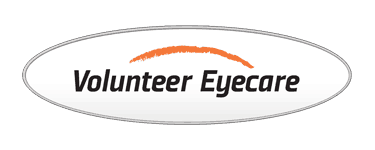
03 Sep How to Recognize Signs of Vision Problems in School-Age Children
Your eyes are more than just windows to the world. The eyes are a complex and powerful tool that enable us to experience life in vivid detail. From the moment you wake up and see the morning light to the time you close your eyes at bedtime, your vision impacts how you connect and interact with everything in your environment. It’s your eyes that capture the smile of a loved one, the beauty of a flower in bloom, and the words on a page that entertain, inform, and inspire. Your visual system doesn’t just help you see the world—it empowers you to connect, learn, and hopefully, thrive within it.
For school-age children, the necessity of having a healthy, functioning visual system cannot be overstated. As kids start their education in preschool or kindergarten, they rely on their eyes as the primary way to absorb knowledge, learn, and socialize. As they grow and advance into grade school and beyond, they use their visual system more and more to learn and digest knowledge. Their eyes and visual skills must grow and advance along with them. The text size in the books they read goes from large text with few words on a page to more advanced books with fewer pictures to college textbooks in the span of about 12 years. Can your student’s eyes meet that challenge?
Healthy Vision is Critical to Student Success
Whether students are reading a textbook, observing a science experiment, or solving math problems on a whiteboard, they rely on their eyes to provide information that is crucial for learning. That’s why clear and healthy vision is critical to student success.
The American Optometric Association states that 80% of what we learn comes through our visual system. Without excellent vision and visual skills – where the eyes work together to inform the brain and body about what they see – even the smartest kids can struggle and fail to reach their full potential.
One in Four Students Have Vision Problems
Did you know that approximately 25% of school-age kids – one in four students – have a vision problem that is significant enough to negatively impact their success in the classroom (and on the sports field, for that matter)? It’s an alarming statistic!
As a parent, you may be thinking something like, “But our school conducts a visual screening every year to make sure students can see 20/20.” That may be true, but unfortunately, most school visual screenings don’t provide a comprehensive and thorough evaluation of a student’s entire visual system, which includes eye teaming, focusing, and tracking skills.
School Vision Screenings Miss 33% of Visual Disorders
A school visual screening is a diagnostic tool used to determine if your student’s eyes and visual system need further evaluation by an optometrist. But unfortunately, according to the American Optometric Association, “Even the most sophisticated vision screening tools, administered by the most highly trained screeners, miss one-third of children with eye or vision disorders.”
The reason? School vision screenings concentrate mainly on visual acuity, which is the ability to read a line of letters from a distance of 20 feet and, therefore, attain what is known as 20/20 vision. While visual acuity is an essential measure of vision, it is not the only essential measure of a well-functioning visual system that will get your student where they want to go in life.
It’s a fact that school vision screenings can miss visual system challenges that will hold your child back from their peak performance.
Ensuring your children have the best possible vision is not just about helping them see the board; it’s about giving them the tools they need to succeed in life.
Signs That Your Student May Have a Vision Challenge
To complicate matters, students with vision challenges may not realize they aren’t seeing well. If you notice any of the following behaviors in your child, make an appointment with your optometrist, as they are symptoms your child may be experiencing visual skill insufficiency:
- Short attention span or difficulty organizing and prioritizing work
- Frequent eye rubbing or blinking
- Covering one eye or seeing double
- Losing their place when reading
- Unusual clumsiness in sports or bumping into objects
- Holding reading materials too close to the eyes
- Headaches or feeling tired
- Discomfort or dizziness after watching 3D content
Look for behavioral signs that may also indicate poor vision, such as your child becoming easily frustrated, disruptive, or inattentive in class. A short attention span, difficulty organizing or prioritizing work, or refusing to do homework (or making excuses for not completing assignments) may also indicate that they need a visit to our offices.
Your child’s eyes and visual system grow and change as they grow. It’s not unusual for a school-age child to experience visual changes. And when they do, remember that early intervention is the key!
Many eye conditions are treatable when caught early in life. Most children make significant improvements or fully regain use of their visual system with proper treatment. However, without treatment, eye problems such as a lazy eye, poor focusing, or weak eye teaming skills become increasingly more difficult to treat when diagnosed later in a child’s life, and can lead to lifelong problems.
Your child’s eyes are a wonder to behold! Help them take good care of their visual system for a lifetime of good vision and learning. Call us today to schedule your student’s comprehensive eye exam and give them the solid foundation they need for lifelong learning through good vision.



Sorry, the comment form is closed at this time.